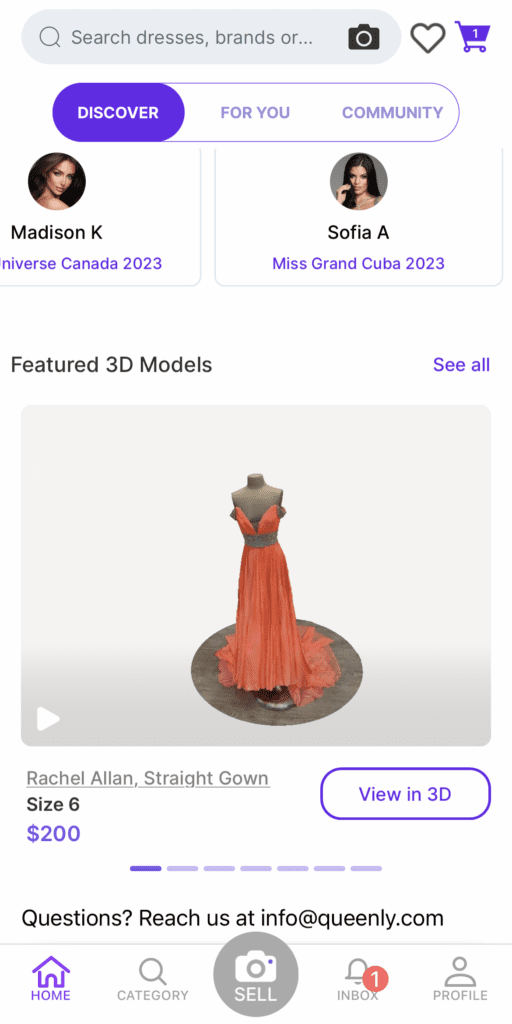Formalwear resale marketplace Queenly uses generative AI and 3D modeling technology to improve the web experience for sellers and buyers, Kathy Zhou, chief technology officer and cofounder says.
AI simplifies the product listing process
Queenly spent 2023 redesigning the way sellers list products on the platform, Zhou says. “We had a standard UI for listing a dress, basically it was just like a very long form,” she says.
Now, instead of asking potential sellers to fill out a form describing the dress they’re selling, Queenly asks them a personalized path of questions. For example, it might ask “Where did you wear this dress?” and “What are the flaws of this dress?”.

Kathy Zhou, chief technology officer and cofounder, Queenly
Then, Queenly uses generative AI to generate a product description based on their answers.
The completion rate of the listing prices increased after the redesign, Zhou says. Now 85% of listings are completed, compared to 60% before the generative AI implementation. Sellers can also create those listings faster, down from an average of 9.5 minutes to just 4.5 minutes.
Queenly discovered its customers generally prefer longer descriptions, too. That finding is true across the board. A September 2023 survey from Digital Commerce 360 and Bizrate Insights of 999 online shoppers found that 58% said a detailed product description is an important feature when online shopping.
The average description on a Queenly listing is now 230 characters, up from 80 characters before the AI-generated listings.
3D modeling helps consumers know what they’re getting
Queenly also added new technology on the buyer side. The resale website released a new 3D modeling feature designed to show customers how a dress would look beyond just a picture, replicating the experience of seeing a product in person. For now, it’s only available on certain listings.

Queenly’s 3D Modeling tool.
After testing different technical solutions, Queenly landed on photogrammetry to create a 3D map of an object based on high resolution images.
The problem, according to Zhou, is that the technology requires 200 to 300 images to create an accurate picture of the dress. That’s not feasible for the average user lister.
“How do we make it so that a seller doesn’t have to take 100 pictures of their dress? What if they only had to take five pictures of their dress,” Zhou says. Then, the technology does the rest of the work, filling in gaps from the photos into a model that consumers can rotate and zoom in on. Queenly is considering giving sellers the option to display 3D models of dresses they want to sell, but they must submit a list of required photos.
Online resale is growing
Consumers are increasingly looking towards resale as an ecommerce shopping option. Online resale retailer ThredUp Inc. reported increases in revenue and total orders in its second quarter ended June 30. ThredUp CEO James Reinhart said that the brand was making gains with customers who are “feeling the pinch across their discretionary purchasing power” due to economic trends.
Secondhand retail continues to make headway with consumers, amounting to $177 billion in secondhand global sales in 2022, according to ThredUp’s 2023 resale report. The report projects the secondhand industry will nearly double to $351 billion in global sales by 2027.
In 2023, children’s clothing retailer Hanna Andersson and apparel retailer H&M both launched resale platforms to recirculate previously owned clothing.
Do you rank in our database?
Submit your data and we’ll see where you fit in our next ranking update.
Sign up
Stay on top of the latest developments in the ecommerce industry. Sign up for a complimentary subscription to Digital Commerce 360 Retail News. Follow us on LinkedIn, Twitter and Facebook. Be the first to know when Digital Commerce 360 publishes news content.
Favorite